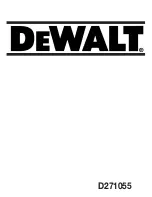
lp-181 Rev. 003 Rel. 008 Date 8.21.18
6
To avoid water damage or scalding due to relief valve operation:
• Discharge line must be connected to relief valve outlet and
run to a safe place of disposal. Terminate the discharge line in a
manner that will prevent possibility of severe burns or property
damage should the relief valve discharge.
• Discharge line must be as short as possible and the same size
as the valve discharge connection throughout its entire length.
• Discharge line must pitch downward from the valve and
terminate at least 6” above the floor drain, making discharge
clearly visible.
• The discharge line shall terminate plain, not threaded, with a
material serviceable for temperatures of 375
o
F or greater.
• Do not pipe discharge to any location where freezing could
occur.
• No valve may be installed between the relief valve and heater
or in the discharge line. Do not plug or place any obstruction in
the discharge line.
• Test the operation of the relief valve after filling and pressurizing
the system by lifting the lever. Make sure the valve discharges
freely. If the valve fails to operate correctly, immediately replace
with a new properly rated relief valve.
• Test T&P valve at least once annually to ensure the waterway is
clear. If valve does not operate, turn the heater “off” and call a
plumber immediately.
• Take care whenever operating relief valve to avoid scalding
injury or property damage.
FAILURE TO COMPLY WITH THE ABOVE GUIDELINES COULD RESULT
IN FAILURE OF RELIEF VALVE OPERATION, RESULTING IN POSSIBILITY
OF SUBSTANTIAL PROPERTY DAMAGE, SEVERE PERSONAL INJURY,
OR DEATH.
RE-INSPECTION OF T&P RELIEF VALVES: T&P valves should be
inspected AT LEAST ONCE EVERY THREE YEARS, and replaced
if necessary,
by a licensed plumbing contractor or qualified
service technician to ensure that the product has not been affected
by corrosive water conditions and to ensure that the valve and
discharge line have not been altered or tampered with illegally.
Certain naturally occuring conditions may corrode the valve and
its components over time, rendering the valve inoperative. Such
conditions can only be detected if the valve and its components are
physically removed and inspected.
Do not attempt to conduct an
inspection on your own.
Contact your plumbing contractor for a
re-inspection to assure continued safety.
FAILURE TO RE-INSPECT THE T&P VALVE AS DIRECTED COULD
RESULT IN UNSAFE TEMPERATURE AND/OR PRESSURE BUILD-
UP WHICH CAN RESULT IN PROPERTY DAMAGE, SERIOUS
PERSONAL INJURY, OR DEATH.
E. Potable Expansion Tank
F. Scalding
Approximate Time / Temperature Relationships in Scalds
120
o
F
More than 5 minutes
125
o
F
1 1/2 to 2 minutes
130
o
F
About 30 seconds
135
o
F
About 10 seconds
140
o
F
Less than 5 seconds
145
o
F
Less than 3 seconds
150
o
F
About 1 1/2 seconds
155
o
F
About 1 second
Table 1 - Approximate Time / Temperature Relationships in Scalds
A water heating system can deliver scalding water. Be careful
whenever using hot water to avoid scalding injury. Certain
A potable hot water expansion tank may be required to offset heated
water expansion. If there is a back flow preventer or any other type
of no return or check valve in the system a thermal expansion tank IS
MANDATORY. The expansion tank must be sized for the entire water
volume of the hot water system. A weeping relief valve indicates the
need for an expansion tank. See the Typical Expansion Tank example
in the Piping section for details.
appliances such as dishwashers and automatic clothes washers may
require increased water
temperatures. By setting
the thermostat to obtain
the increased water
temperature required
by these appliances you
may create the potential
for scald injury.
To protect against injury,
install a mixing valve
in the water system.
This valve will reduce
point of use discharge
temperatures by mixing
cold and hot water in
branch supply lines. Such
valves are available from
your local plumbing
supplier.
Table 3 details the
relationship of water
temperature and time
with regard to scald injury
and may be used as a
guide in determining the
safest water temperature
for your applications.
for the storage tank.
80 and 119 Gallon Storage Tanks:
Use 2” NPT nominal pipe size. A
T&P port is included on 80 and 119 gallon tanks.
175 Gallon Storage Tanks:
Use 2
1/2
” NPT nominal pipe size. A T&P
port is included on 175 gallon tanks.
D. Temperature and Pressure Relief Valve
On all models, an appropriate temperature and pressure (T&P) valve
must be supplied and installed as detailed in the piping diagrams in
this installation manual.
Use both thread tape and pipe dope to install an NPT brass T&P relief
valve for hot water heaters, as required by local codes but not less than
valves certified as meeting the requirements for relief valves for hot
water heaters (ANSI Z21.22 and CAN 1-4.4) by a nationally recognized
lab that maintains periodic inspection of production listed equipment.
Make sure the relief valve is sized to the BTU/Hour capacity of the
boiler. The T&P valve must be plumbed down so discharge can exit at
least 6” above the structural floor. The relief line cannot be in contact
with any live electrical parts. If the relief valve constantly weeps install
an expansion tank. See expansion tank manufacturer’s instructions for
suggestions.
Do not thread a cap or plug into the relief valve or relief valve line
under any circumstances! Explosion and property damage, serious
injury, or death may result.






























